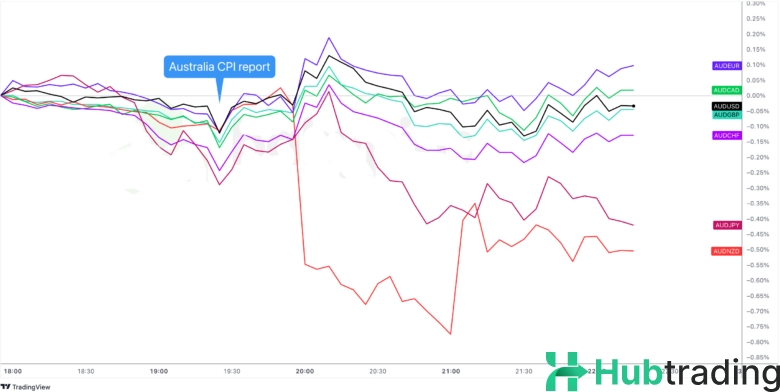The Australian Bureau of Statistics (ABS) reported that headline inflation increased by 2.1% year-over-year in October, unchanged from September's figure and slower than the 2.7% rise in August. Analysts had expected a faster price increase of 2.8%.
Excluding volatile items such as food and holiday travel, consumer prices rose by 2.4% in October, down from 2.7% in September.
The Reserve Bank of Australia’s (RBA) trimmed mean inflation, a key measure of underlying inflation, came in at 3.5% in October, up from 3.2% in September.
- The latest data showed notable price increases in food and non-alcoholic beverages (+3.3%), holiday travel and accommodation (+8.0%), and alcohol and tobacco (+6.0%).
- On the other hand, transport (-2.8%) and electricity (-35.6%) helped offset overall price growth, with fuel prices falling by 11.5% year-over-year.
- Housing costs saw a slight increase, with rents rising 6.7% annually amid tight rental markets.
Although inflation remains above the RBA’s 2%-3% target range, it is gradually moderating, keeping the central bank’s current policy stance in focus as traders look ahead to the next RBA meeting.
Australian dollar vs. Major Currencies: 5-min

In reaction to the data, the Australian Dollar initially dipped on the cooler inflation reading but quickly recovered as traders considered that the report was unlikely to shift the RBA’s view that inflation “remains too high.”
The Aussie showed mixed performance against major currencies, weakening notably against the NZD and JPY, while its movements against other currencies were more varied.





